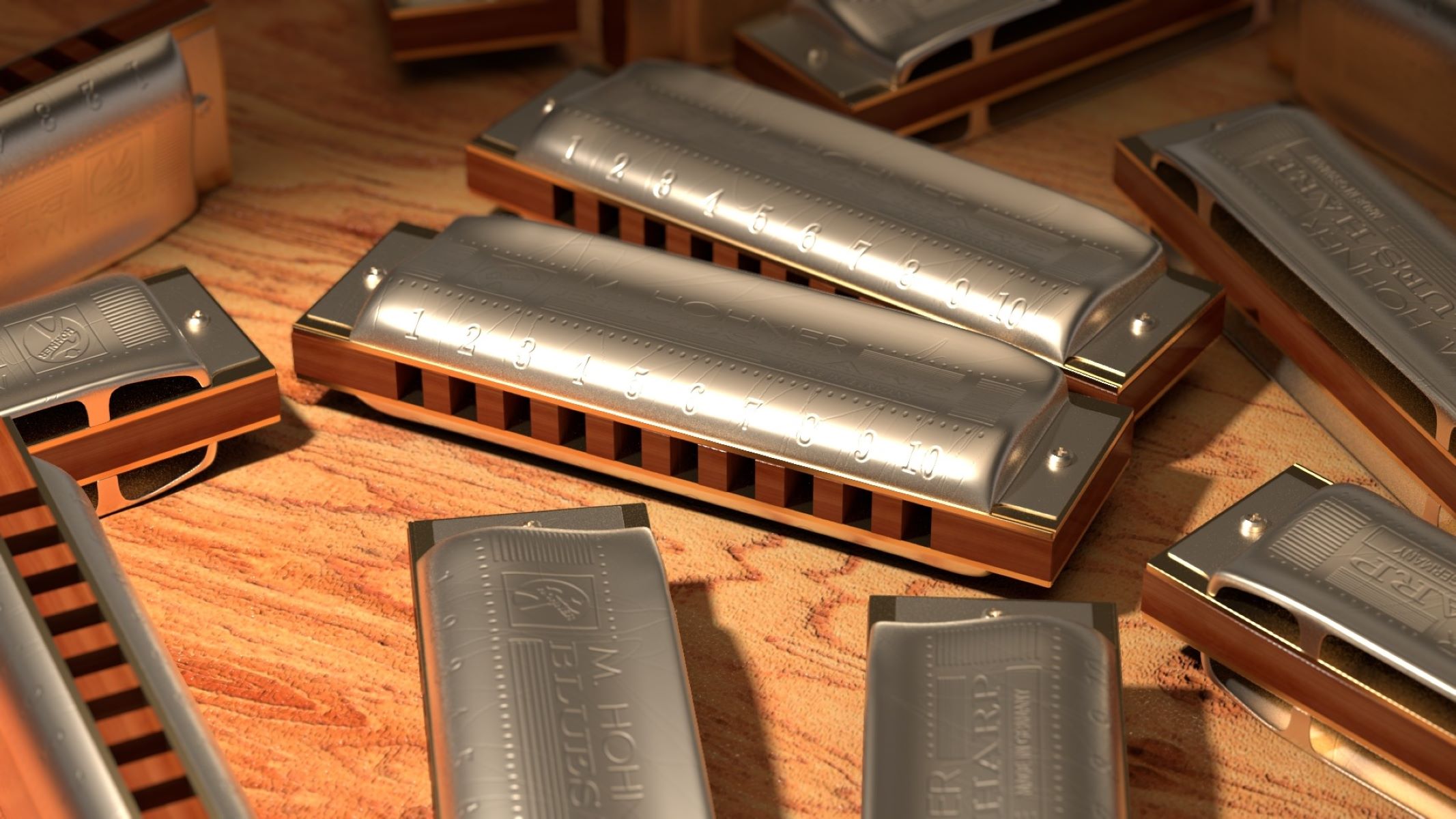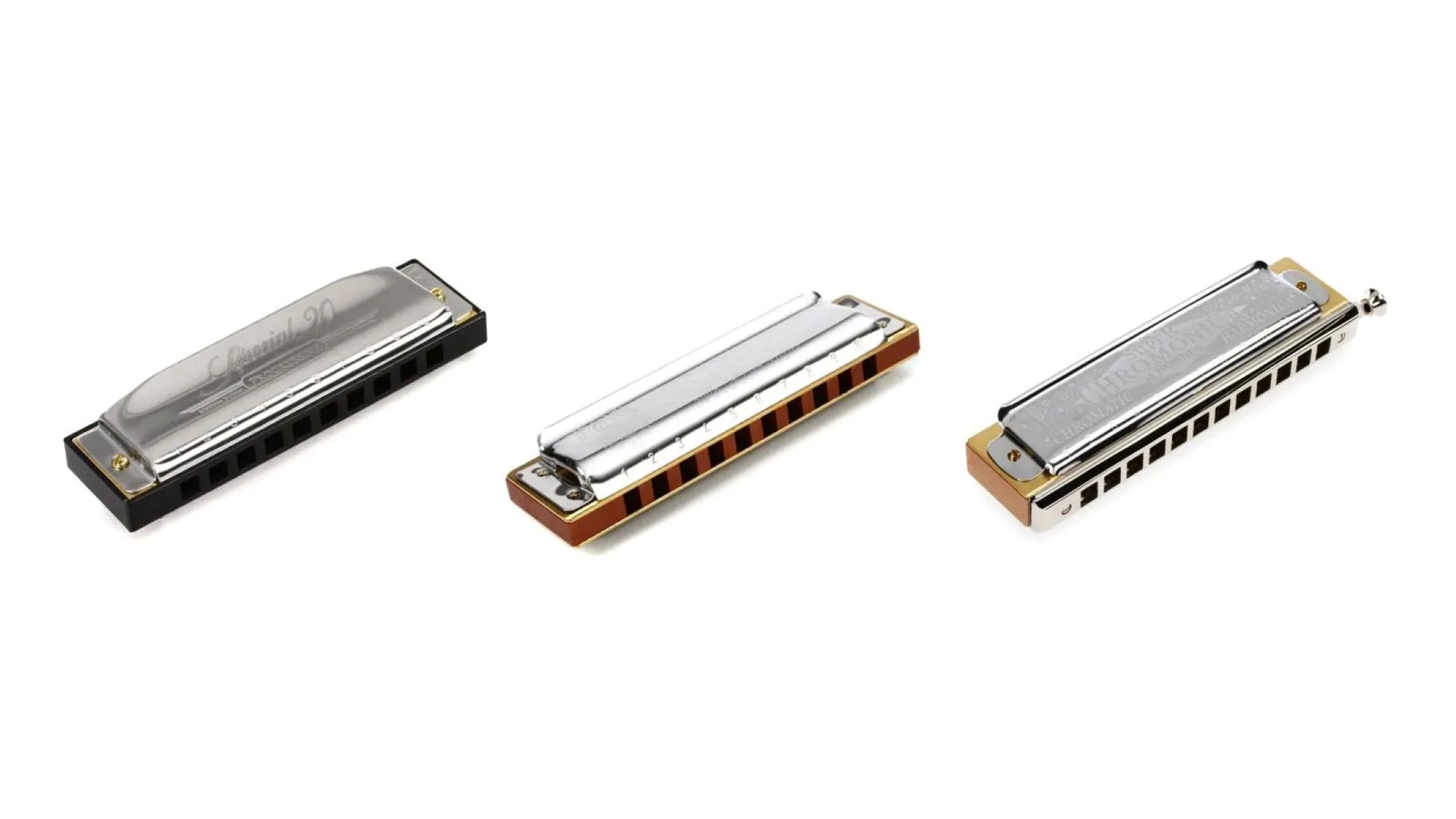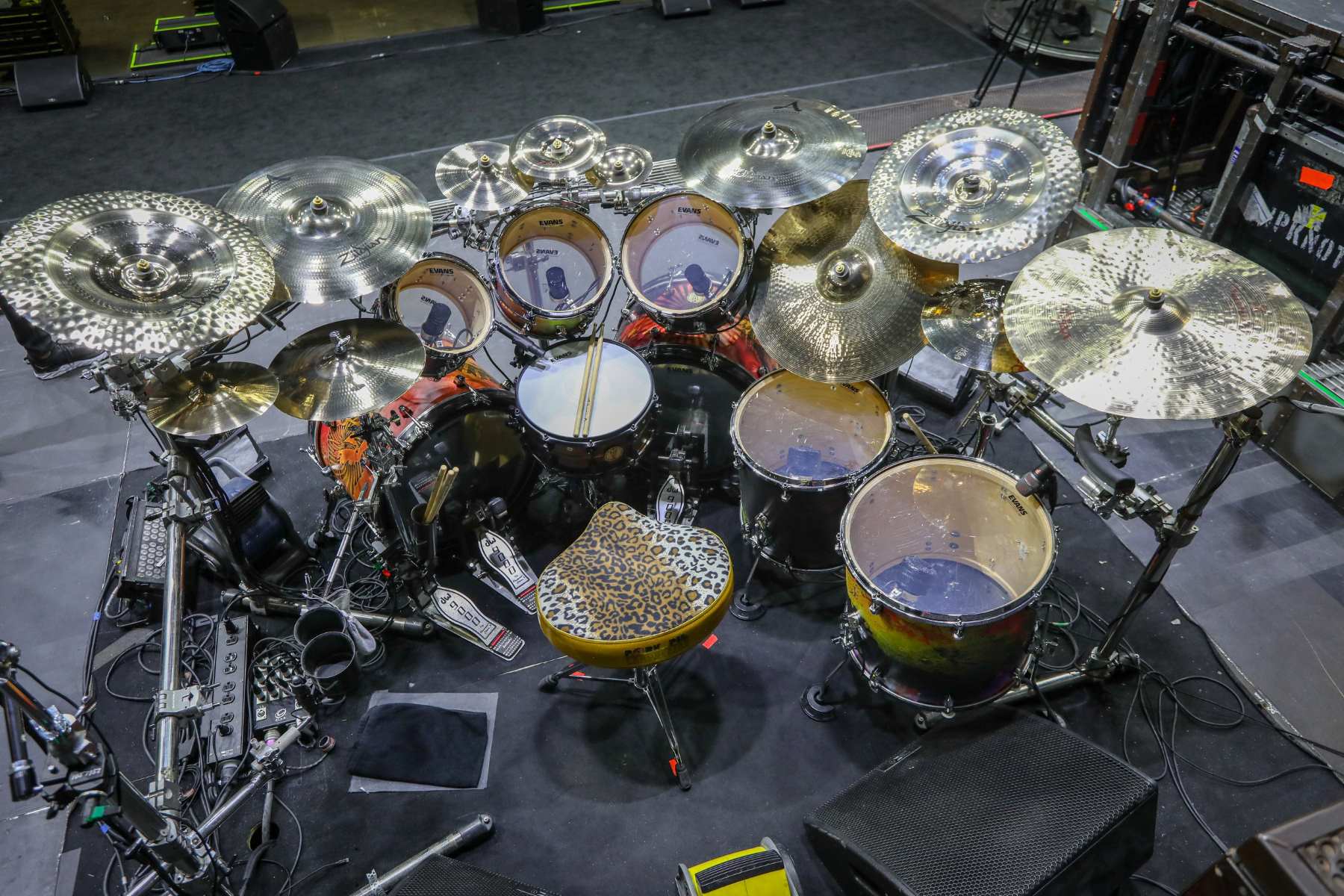Home>Instruments>Harmonica>What Harmonica Does Bob Dylan Use


Harmonica
What Harmonica Does Bob Dylan Use
Modified: February 3, 2024
Discover the harmonica Bob Dylan uses and get insights on the best harmonica for your musical journey. Find expert recommendations and tips to enhance your harmonica playing skills.
(Many of the links in this article redirect to a specific reviewed product. Your purchase of these products through affiliate links helps to generate commission for AudioLover.com, at no extra cost. Learn more)
Table of Contents
Introduction
Bob Dylan, the legendary singer-songwriter and Nobel laureate, needs no introduction. His music has transcended generations and touched the hearts of millions of people around the world. From his poignant lyrics to his distinct vocal style, Dylan’s music has left an indelible mark on the music industry.
One of the key elements that make Bob Dylan’s music so unique is his harmonica playing. Often called the “harp,” the harmonica has become synonymous with Dylan’s sound. His melancholic and soulful harmonica solos have become defining moments in many of his iconic songs.
In this article, we will explore the role of the harmonica in Bob Dylan’s music and dive into the different types of harmonicas he uses. We will also discuss Dylan’s preferred harmonica and its influence on his iconic sound. So, whether you’re a fan of Dylan’s music or a harmonica enthusiast, get ready to delve into the world of Bob Dylan’s harmonica prowess!
The Love for Bob Dylan’s Music
Bob Dylan’s music has a timeless quality that resonates with people from all walks of life. His lyrics are introspective, poetic, and often laden with social and political commentary. From his early folk protest songs to his later exploration of different genres, Dylan’s music has been a source of inspiration for countless artists and fans alike.
What sets Bob Dylan apart from other musicians is his ability to connect with his audience on a deep emotional level. His songs evoke a sense of vulnerability, honesty, and raw emotion that leaves a lasting impact. Whether it’s the haunting “Blowin’ in the Wind” or the anthemic “Like a Rolling Stone,” Dylan’s music has the power to move people and make them reflect on the world around them.
Part of the allure of Bob Dylan’s music is the element of mystery that surrounds him. He is known for his enigmatic personality and reluctance to conform to societal norms. This sense of mystique adds to the fascination with his music and keeps fans drawn to his artistry. Dylan’s ability to constantly reinvent himself and explore different musical avenues has also kept his music fresh and relevant throughout the years.
Bob Dylan’s music has garnered a dedicated following, with fans spanning across generations. His influence can be seen in the works of numerous artists who have been inspired by his unique style and songwriting prowess. From folk singers to rock bands, many musicians credit Dylan as a major influence on their own musical journey.
Whether you’ve been a fan of Dylan’s music for decades or have just discovered his songs, there is a universal appeal to his music that transcends time and trends. The love for Bob Dylan’s music is not simply because of his catchy melodies or poetic lyrics, but because of the way his music touches the soul and sparks introspection.
The Role of Harmonica in Bob Dylan’s Music
When it comes to Bob Dylan’s music, the harmonica plays a significant role in shaping his unique sound. Dylan’s harmonica playing is often characterized by its rawness, emotion, and raw energy. It serves as a powerful complement to his distinct vocals and guitar playing, adding a layer of soulful intensity to his songs.
The harmonica is not just an accompaniment in Dylan’s music; it is an integral part of the storytelling. Dylan’s harmonica solos have become synonymous with his music, creating memorable moments in his songs. From the haunting intro of “The Times They Are a-Changin'” to the captivating harmonica riffs in “Like a Rolling Stone,” Dylan uses the harmonica to evoke a myriad of emotions.
One of the key roles of the harmonica in Dylan’s music is its ability to enhance the lyrical message of his songs. Dylan’s lyrics often tackle social and political issues, and the harmonica adds a sense of urgency and authenticity to his message. It serves as a voice of protest, amplifying the emotions behind his powerful words.
In addition to its role in conveying the message, the harmonica also adds a layer of musicality to Dylan’s compositions. His harmonica solos are often melodic and expressive, serving as a counterpoint to his vocals or guitar. The harmonica becomes another instrument in his musical arsenal, creating dynamic and captivating arrangements.
Another aspect of the harmonica’s role in Dylan’s music is its improvisational nature. Dylan’s harmonica playing is known for its spontaneity and unpredictability. He often explores different melodies and rhythms within a song, allowing the harmonica to take on a life of its own. This improvisational approach adds a sense of rawness and authenticity to his music, giving each performance a unique and captivating energy.
In summary, the harmonica plays a crucial role in Bob Dylan’s music, serving as a powerful and emotive instrument that complements his lyrics and adds a layer of soulful intensity to his compositions. Its ability to enhance the storytelling, convey emotions, and add a melodic element showcases Dylan’s mastery of the harmonica as an essential element of his musical identity.
Understanding the Types of Harmonicas
Before we delve deeper into Bob Dylan’s harmonica of choice, it’s important to understand the different types of harmonicas available. The harmonica, also known as a mouth organ or harp, comes in various configurations, each with its unique characteristics and sound.
Here are some of the most common types of harmonicas:
- Diatonic Harmonica: This is the most common type of harmonica and is widely used in blues, folk, rock, and country music. The diatonic harmonica is limited to a specific key and has a fixed number of reeds tuned to that key. It is capable of playing seven notes in the major scale and can also bend notes to achieve more expressive melodies.
- Chromatic Harmonica: Unlike the diatonic harmonica, the chromatic harmonica can play all the notes in the chromatic scale. It has a button on the side that, when pressed, redirects airflow, allowing the player to access the sharps and flats. This versatility makes the chromatic harmonica suitable for playing a wide range of musical genres.
- Tremolo Harmonica: The tremolo harmonica is known for its distinct sound, characterized by its double reeds per hole. These reeds are tuned slightly apart, creating a vibrating or tremolo effect. The tremolo harmonica is commonly used in folk music and gives a rich and melodic sound.
- Blues Harmonica: Also known as the blues harp, the blues harmonica is a type of diatonic harmonica specifically designed for playing blues music. It has a distinctive sound and is often associated with the wailing, expressive solos commonly found in blues music.
These are just a few examples of the different types of harmonicas available. Each harmonica type has its own unique characteristics, and different musicians may prefer certain types depending on the style of music they play.
Now that we have a better understanding of the types of harmonicas, let’s explore Bob Dylan’s harmonica of choice and the impact it has had on his music.
Bob Dylan’s Harmonica of Choice
Throughout his career, Bob Dylan has been known to favor the Hohner Marine Band harmonicas. The Marine Band harmonicas have become synonymous with Dylan’s harmonica sound and are often associated with his iconic songs.
The Hohner Marine Band harmonica is a diatonic harmonica that has been in production since the 19th century, making it one of the oldest harmonica models still in use today. The harmonicas are handmade, featuring a pearwood comb and high-quality reeds that deliver a warm and rich tone.
What makes the Marine Band harmonica particularly appealing to Dylan is its versatility and responsiveness. The harmonica allows for expressive playing with its ability to bend and manipulate notes, providing Dylan with the ability to create the distinct sound that has become his signature.
Dylan’s harmonica playing style often involves improvisation and experimentation during live performances. The Marine Band harmonica’s reliability and durability make it well-suited for such spontaneity and allow Dylan to deliver captivating and dynamic harmonica solos.
It’s worth noting that Dylan has also been known to experiment with other harmonicas throughout his career, including the Hohner Special 20 and the Hohner Golden Melody, among others. However, the Marine Band harmonicas remain his go-to choice for their timeless sound and playability.
Dylan’s harmonica playing has not only influenced his own music but has also inspired countless harmonica players around the world. His unique approach to the instrument, characterized by his rawness and emotional depth, has become a standard for aspiring harmonica players seeking to capture the essence of Dylan’s sound.
Bob Dylan’s choice of the Hohner Marine Band harmonicas, combined with his distinctive playing style, has contributed significantly to his signature sound. The harmonica’s responsiveness and versatility have allowed Dylan to elevate his music with soulful and expressive harmonica solos, cementing his status as one of the greatest harmonica players in the history of music.
The Influence of Bob Dylan’s Harmonica Playing
The impact of Bob Dylan’s harmonica playing goes beyond his own music. His unique approach to the instrument has left a lasting influence on the world of music.
One of the main ways Dylan’s harmonica playing has influenced others is by bringing the harmonica to the forefront of popular music. Before Dylan, the harmonica was primarily seen as a folk and blues instrument. However, Dylan’s integration of the harmonica into his folk-rock sound helped popularize the instrument and inspire other musicians to explore its potential.
Dylan’s harmonica style, characterized by its rawness, emotional depth, and improvisational nature, has become a reference point for harmonica players across various genres. His ability to intertwine his harmonica playing with his lyrics and guitar playing has become a blueprint for musicians looking to incorporate the harmonica as a meaningful expression within their compositions.
Furthermore, Dylan’s use of the harmonica as a storytelling tool has had a profound impact on songwriting. His harmonica solos often serve as punctuation marks, elevating the emotional impact of his lyrics. Many songwriters have since incorporated the harmonica in their own music to achieve a similar effect, using it as a means to add depth, emotion, and texture to their songs.
In the world of rock music, Dylan’s harmonica playing has influenced countless artists. From Neil Young to Bruce Springsteen, harmonica solos reminiscent of Dylan’s style can frequently be heard in their music. The soulful wailing and melodic riffs that Dylan is known for have become ingrained in the rock music lexicon, adding a distinct layer of musicality and emotion.
Even in contemporary music, Dylan’s harmonica influence can be found. Artists such as Jack White and Ed Sheeran incorporate harmonica into their songs, drawing inspiration from the pioneering work of Bob Dylan. His impact on the harmonica as an instrument of choice for musicians across genres is a testament to his enduring legacy.
Bob Dylan’s harmonica playing has not only influenced musicians but has also captivated audiences worldwide. His ability to evoke powerful emotions and create memorable moments through his harmonica solos has left an indelible mark on music history. Dylan’s harmonica playing reminds us of the instrument’s expressive potential and continues to inspire musicians to push the boundaries of what can be achieved with the harmonica.
Conclusion
Bob Dylan’s harmonica playing has become synonymous with his music, adding a layer of soulful intensity and emotion to his songs. Through his use of the harmonica, Dylan has created iconic moments and left a lasting influence on the world of music.
From his early folk protest songs to his later explorations of different genres, Dylan’s harmonica solos have become defining elements of his sound. The rawness, improvisation, and emotional depth of his harmonica playing have captivated audiences and inspired countless musicians.
The Hohner Marine Band harmonicas, with their timeless sound and versatility, have been Dylan’s harmonicas of choice, providing him with the ability to bend and manipulate notes and deliver dynamic and captivating performances. Dylan’s harmonica prowess has paved the way for harmonica players across genres, as his unique style and storytelling approach have influenced the use of the instrument in popular music.
Beyond his own music, Dylan’s harmonica playing has left a lasting impact on songwriting and the integration of the harmonica into various genres. His ability to blend the harmonica with his lyrics and guitar playing has become a reference point for musicians seeking to incorporate the instrument as a meaningful expression in their compositions.
From folk to rock, Dylan’s harmonica influence can be seen in the works of artists who have been inspired by his soulful wailing and melodic riffs. His harmonica playing continues to resonate with audiences, captivating listeners across generations and showcasing the expressive potential of the instrument.
In conclusion, Bob Dylan’s harmonica playing is an integral part of his artistic identity. It has contributed to the depth, emotional impact, and storytelling of his music. Dylan’s influence on the harmonica as an instrument of choice and his ability to infuse it with rawness and soulfulness have left an indelible mark on the music industry, making him a true pioneer and legend in the world of harmonica playing.











